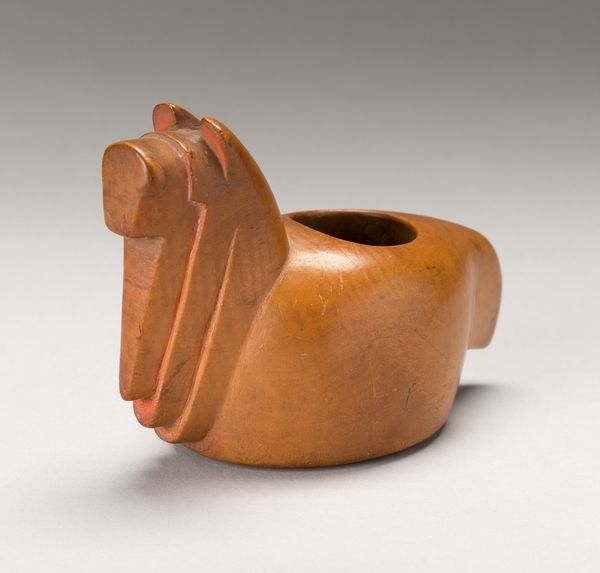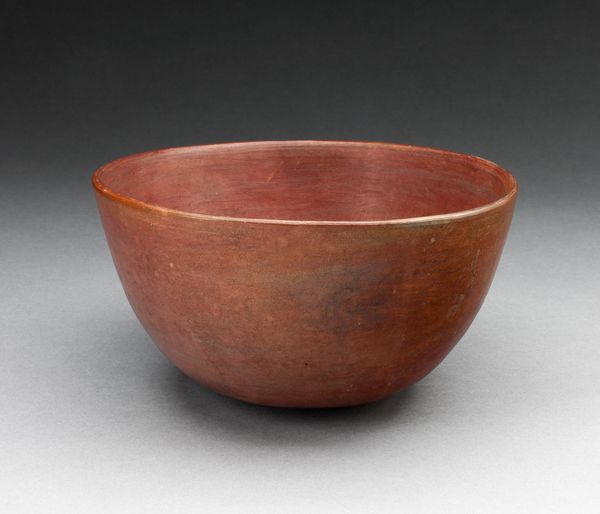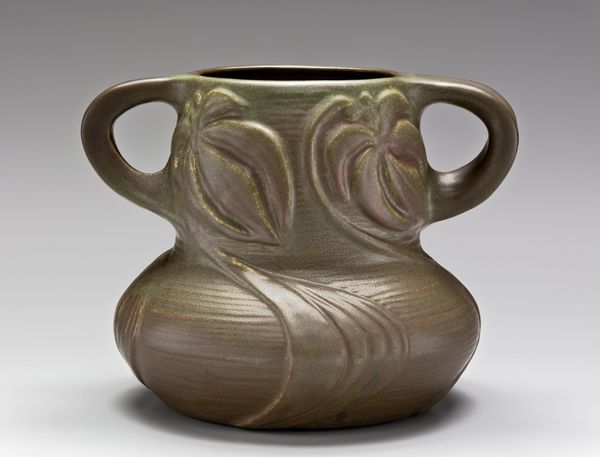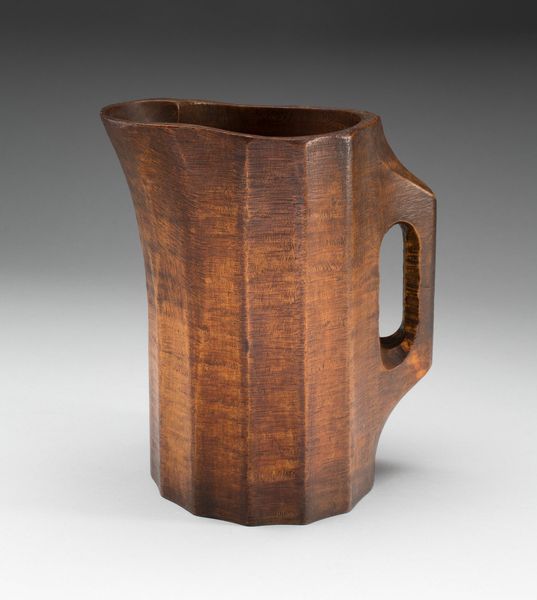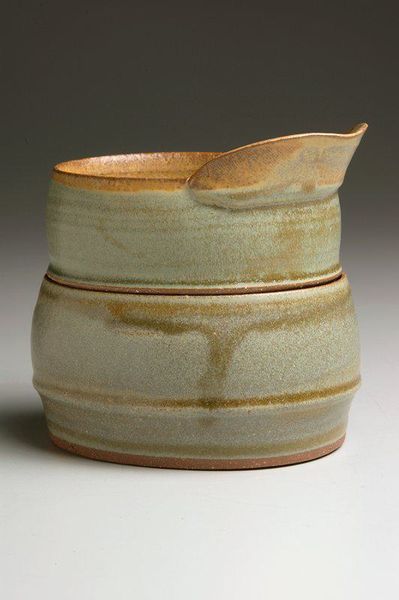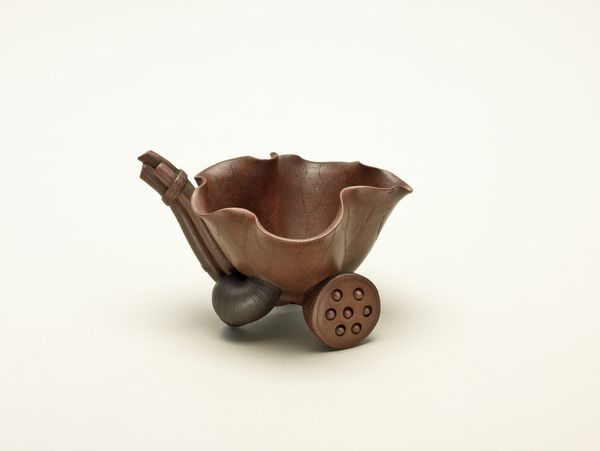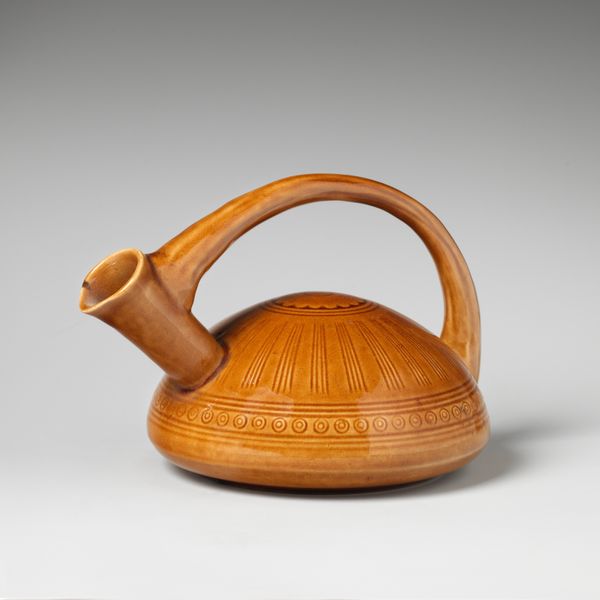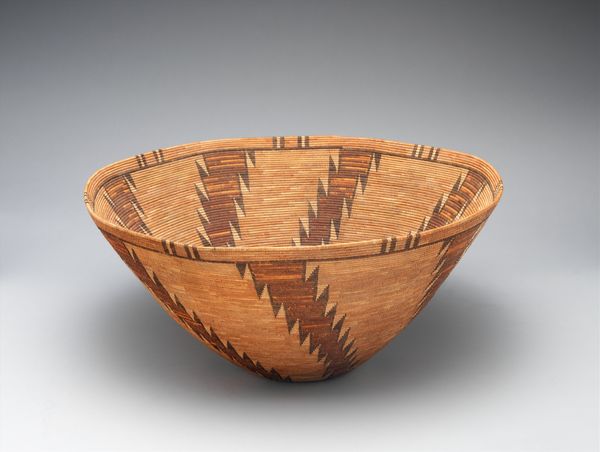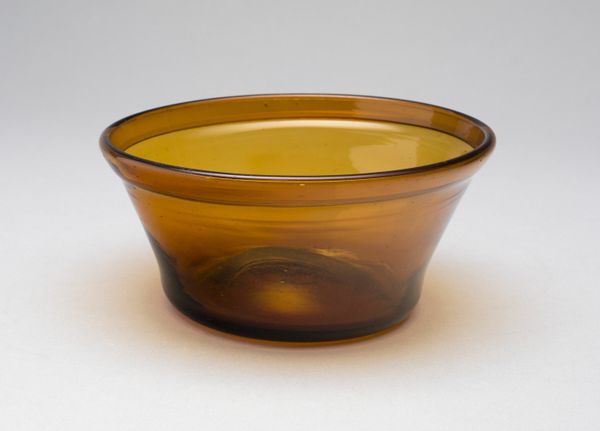
ceramic, earthenware, sculpture
#
art-nouveau
#
ceramic
#
form
#
earthenware
#
stoneware
#
sculpture
#
abstraction
#
united-states
Dimensions: 4 5/16 x 7 1/8 in. (11 x 18.1 cm)
Copyright: Public Domain
Editor: So this is George Ohr's "Bowl," made sometime between 1895 and 1913. It's earthenware, currently housed at the Met. It looks… almost deflated? Definitely unconventional. How do you interpret this work, and what makes it stand out? Curator: It's that very unconventionality that speaks volumes. Ohr, often dubbed the "Mad Potter of Biloxi," directly challenged Victorian notions of propriety and perfection in craft. This "Bowl" isn't just a vessel; it’s a visceral rejection of established artistic hierarchies. It reflects the societal upheavals of the late 19th century, questioning rigid structures, much like feminist manifestos challenging patriarchal norms. What does the deformation signify? Editor: It looks almost like the clay is resisting being contained, a fight against a fixed shape. It makes me think of gender fluidity and resisting labels. Curator: Precisely. The "Bowl" embodies resistance. Its asymmetry mirrors the imperfection inherent in the human experience, resonating with feminist philosophies that deconstruct the idealization of the female form. Think of the emphasis on surface texture as a disruption, a form of rebellion similar to how marginalized voices interrupt dominant narratives. The glaze reminds me of raw earth – unpolished and inherently honest. Editor: I never considered how deeply connected it could be to social movements. I initially just saw a wonky bowl. Curator: But seeing the “wonkiness,” as you put it, is the first step. Consider how Ohr weaponized imperfection as a form of artistic activism. He transformed utilitarian objects into provocative statements challenging conventional beauty standards, class expectations and artistic elitism. What did this bowl 'do' for art and society? Editor: It certainly opened my eyes to the power of art as a form of cultural commentary, and that beauty can be found even in something that’s… imperfect. Curator: Indeed, this bowl demands we consider how objects become sites of cultural resistance. Art such as this serves as powerful dialogue for us all.
Comments
No comments
Be the first to comment and join the conversation on the ultimate creative platform.


